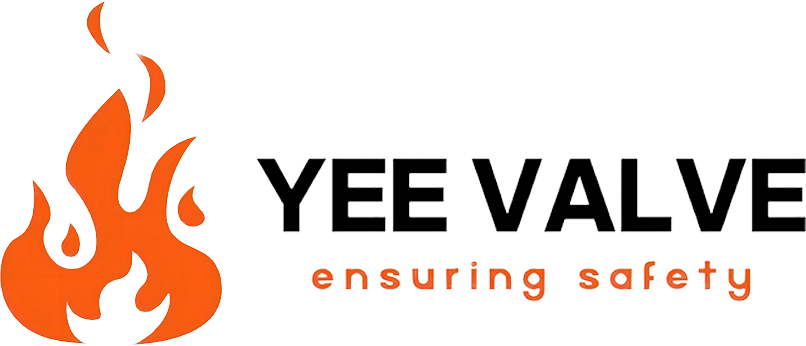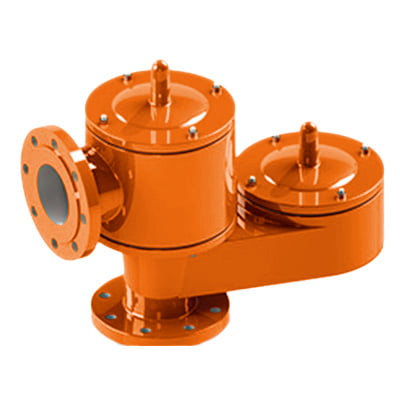لحجم صمام الاستراحة بشكل صحيح ، اتبع هذه الخطوات:
الخطوة 1. تحديد مواصفات الخزان
- قياس قطر الخزان والارتفاع.
- Identify the tank's location and the environmental conditions it will be exposed to.
- جمع ورقة بيانات سلامة المواد (MSDs) للوسائط المخزنة في الخزان ، والتي تشمل:
*وسائل الإعلام فلاش نقطة
*نقطة غليان الوسائط
*الحرارة الكامنة للتبخير
*الكتلة الجزيئية النسبية من البخار.
الخطوة 2. حساب أقصى معدلات تدفق
إنشاء الحد الأقصى لمعدل ملء الخزان (بالأمتار المكعبة في الساعة).
إنشاء الحد الأقصى لمعدل إفراغ الخزان (بالأمتار المكعبة في الساعة).
الخطوة 3. ضبط الضغط والفراغ
*تحديد الضغوط الداخلية المحددة (في MBAR) التي يجب أن يطلقها الصمام.
*حدد ضغط فراغ المحدد (في MBAR) الذي يجب أن يتعامل معه الصمام.
*ضع في اعتبارك درجة حرارة المحددة وحدد ما إذا كان نوع التهوية سيكون بعيدًا عن الأنابيب أو في الغلاف الجوي.
الخطوة 4. حدد حجم الصمام
*بناءً على معدلات التدفق المطلوبة وضبط الضغوط ، استخدم الحسابات المناسبة لتحديد حجم الصمام. الاستفادة من معايير مثل API 2000 أو ISO 28300 للحصول على إرشادات التحجيم الدقيقة. يوفر العديد من الشركات المصنعة برامج أو مخططات تحجيم للمساعدة في اختيار حجم الصمام الصحيح.
*The valve size can range from 2" to 12" (50 to 300 mm), depending on the application requirements and flow calculations.
الخطوة 5. المواد والميزات الإضافية
*Choose the valve material based on the media's compatibility and environmental conditions. Options include aluminum, ductile iron, stainless steel, carbon steel, and various alloys.
*ضع في اعتبارك ميزات إضافية مثل الطلاء الواقي أو أجهزة استشعار الإنذار أو التصميمات الخاصة (على سبيل المثال ، مانعات اللهب ، والآليات المحملة بالنابض أو التحميل للوزن) حسب الحاجة لتطبيقات محددة.
الخطوة 6. الاستفادة من دعم الشركة المصنعة
إذا لم يكن الحجم واضحًا ، فإن العديد من الشركات المصنعة تقدم خدمة تحجيم الصمامات لتوفير أداء صمام مثالي ومواصفات فنية فعالة من حيث التكلفة. نحن نقدم خدمات التحجيم والحساب المصممة خصيصًا لمتطلبات العملاء المحددة.
من خلال اتباع هذه الخطوات ، يمكنك التأكد من أن صمام التنفس بحجمه بشكل صحيح لتطبيقك ، مما يوفر حماية فعالة ضد الظروف الإفراط في الضغط والفراغ في خزانات التخزين الخاصة بك.


صمام الاستراحة مقابل صمام تخفيف الضغط PRV
نعلم جميعًا أن اختيار الصمام المناسب أمر مهم لضمان السلامة والكفاءة [...]
أغسطس
إجراء اختبار صمام التنفس
في أنظمة الخزانات الصناعية، يعد صمام التنفس مكونًا رئيسيًا لضمان أن [...]
أغسطس
3 خطوات بسيطة لاختيار صمام الاستراحة المناسب بسرعة
YeeValve هو قسم متخصص في THINKTANK يقوم بتصنيع صمامات التنفس. نقدم استشارات مجانية[...]
أغسطس
Service & Technical Support
1. المساعدة الفنية تقدم Yee Valve إرشادات الخبراء لاختيار الصمام وتركيبه وصيانته. عملاء [...]
يمكن
قائمة مراجعة الطلب
عند تقديم طلب إلى Yee Valve، إليك الخطوات التي يجب عليك اتباعها [...]
يمكن
كيفية تحديد حجم صمام الاستراحة؟
لتحديد حجم صمام التنفس بشكل صحيح، اتبع الخطوات التالية: الخطوة 1. تحديد مواصفات الخزان قم بالقياس [...]
يمكن